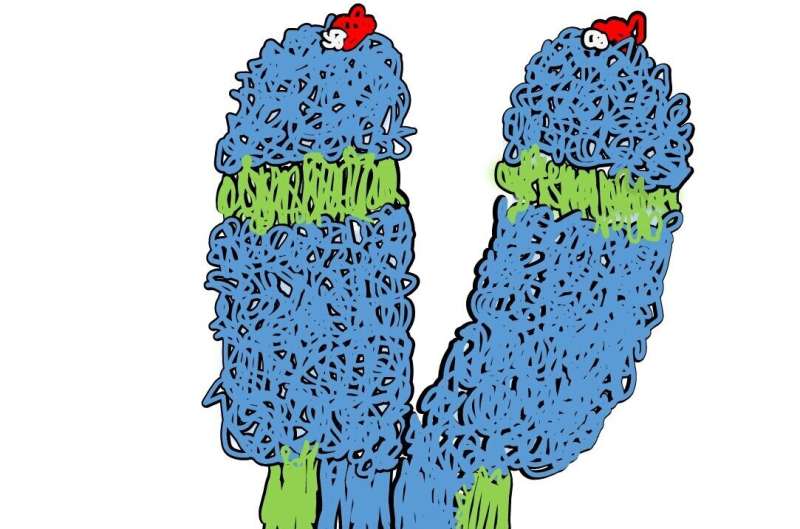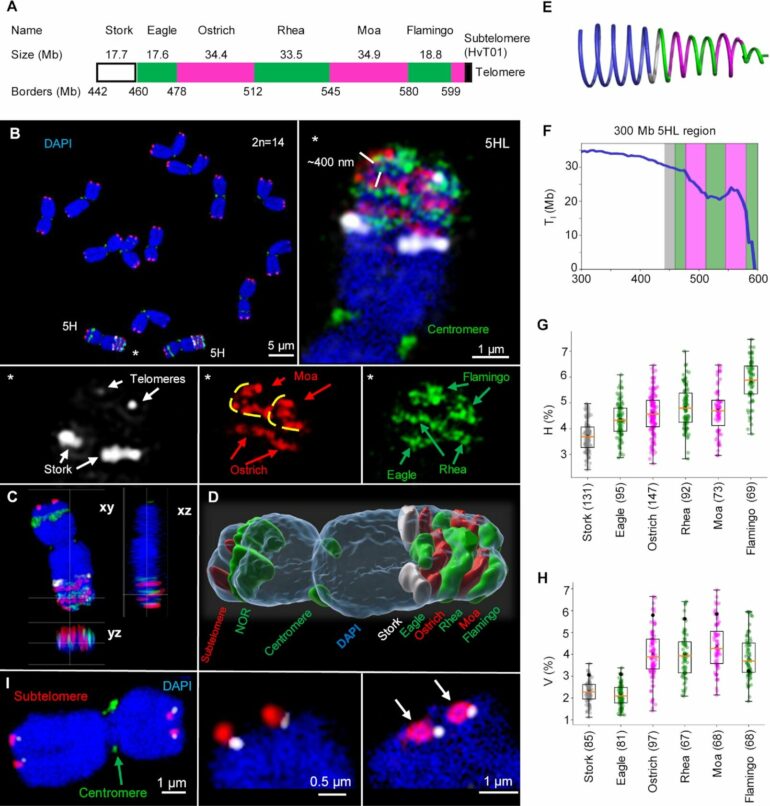The iconic X-shaped organization of metaphase chromosomes is frequently presented in textbooks and other media. The drawings explain in captivating manner that the majority of genetic information is stored in chromosomes, which transmit it to the next generation. “These presentations suggest that the chromosome ultrastructure is well-understood. However, this is not the case,” says Dr. Veit Schubert from IPK’s chromosome structure and function research group.
Several models have been proposed to describe the higher-order structure of metaphase chromosomes based on data obtained using a range of molecular and microscopy methods. These models are categorized as helical and non-helical. Helical models assume that the chromatin in each sister chromatid at metaphase is arranged as a coil, whereas non-helical models suggest that chromatin is folded within the chromatids without forming a spiral.
The researchers revived the term “chromonema,” which was used for the first time at the beginning of the 20th century. Now, the IPK and IEB researchers provided a detailed description of its ultrastructure. Different experimental approaches, including chromosome conformation capture sequencing (Hi-C) of isolated mitotic chromosomes, polymer modeling, and microscopic observations of sister chromatid exchanges and oligo-FISH labeled regions at the super-resolution level provided an independent proof for the coiling of the chromonema.
“Our multidisciplinary approach demonstrates that the coiled chromatid organization and its organizational unit, the chromonema, can be confirmed independently by different methods.” says Dr. Veit Schubert.
“To study the higher-order structure of mitotic chromosomes, the large chromosomes of barley (Hordeum vulgare) were used as a model. A single helical turn covers 20–38 Mb, creating a ~400 nm thick fiber, which we identify as the chromonema,” says Dr. Amanda, Camara, one of the first authors of the study.

Researchers provide proof of the helical coiling of condensed chromosomes. © IPK Leibniz Institute
The model proposes a general mechanism for the formation of condensed mitotic chromosomes, which is applicable to all eukaryotes across a broad range of genome sizes.
“We expect that following our study, chromonema coiling will be confirmed in a larger number of plant and animal species containing large chromosomes. The identification of the principle of chromosome condensation in this work is the stepping stone to understanding chromatin dynamics during the course of the cell cycle,” says Dr. Amanda Camara.
The study is published in the journal Nucleic Acids Research.
More information:
Ivona Kubalová et al, Helical coiling of metaphase chromatids, Nucleic Acids Research (2023). DOI: 10.1093/nar/gkad028. academic.oup.com/nar/advance-a … /nar/gkad028/7058222
Provided by
Leibniz Institute of Plant Genetics and Crop Plant Research
Citation:
Researchers provide proof of the helical coiling of condensed chromosomes (2023, March 2)



